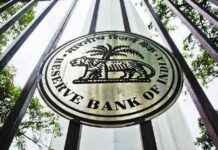Finance Minister Nirmala Sitharaman recently announced significant changes to Tax Deducted at Source (TDS) compliance in Budget 2025, impacting individuals, senior citizens, and companies. The revised thresholds aim to reduce the tax burden on taxpayers while simplifying the compliance process for companies.
Under the new proposal, the TDS threshold has been raised by Rs 10,000 for individuals and doubled for senior citizens. For the general public, tax will only be deducted if income from sources like Fixed Deposits (FDs) and Recurring Deposits (RDs) exceeds Rs 50,000 in a financial year. Senior citizens will only face tax deductions when their interest income surpasses Rs 1 lakh annually from savings accounts, FDs, and RDs.
The primary goal behind these changes is to provide more financial relief to the middle class and senior citizens. Previously, the TDS threshold was set at Rs 40,000 for the general public and Rs 50,000 for senior citizens. These revisions are scheduled to come into effect on April 1, 2025.
Understanding TDS on Fixed Deposits
Fixed deposits are a popular investment avenue offering higher interest rates, making them a secure way to grow wealth. Investors earn interest at a fixed rate on their deposited amount, with the flexibility to choose interest payouts monthly, quarterly, semi-annually, or annually. FDs provide guaranteed returns without capital loss risk, offering better interest rates compared to savings accounts.
In India, Tax Deducted at Source (TDS) involves deducting taxes at the source of income. When a deductor makes a payment to a deductee, they must withhold and deposit the tax to the Central Government. The deductee can claim a credit for the TDS amount based on Form 26AS or a TDS certificate issued by the deductor.
TDS on fixed deposits refers to the tax deducted by the bank upon FD maturity. The calculated amount is based on a set percentage of the final dividend and remitted to the government as tax. This figure is then integrated into the recipient’s income tax records and reconciled with their tax returns.
Calculating TDS on FDs
Interest earned on Fixed Deposits is fully taxable and classified as ‘income from other sources.’ TDS on FDs is computed based on the interest income earned during the financial year, considering factors like interest rate, deposit amount, duration, and applicable tax slabs.
If your annual income is below Rs 2.5 lakh, banks will not levy any tax on your FD. However, some institutions may require Forms 15G or 15H for tax exemptions. Interest income below Rs 40,000 annually is not subject to TDS. If it exceeds Rs 40,000, a 10% TDS applies, increasing to 20% without a PAN card.
Senior citizens follow the same regulations as other account holders, with interest earnings needing to exceed Rs 50,000 to trigger TDS, compared to Rs 40,000 for other individuals.
In conclusion, the revised TDS thresholds announced in Budget 2025 aim to provide relief to taxpayers and streamline compliance for companies. These changes are set to take effect on April 1, 2025, impacting how TDS is calculated on Fixed Deposits and other income sources. Taxpayers should stay informed about these modifications to ensure proper tax planning and compliance moving forward.























